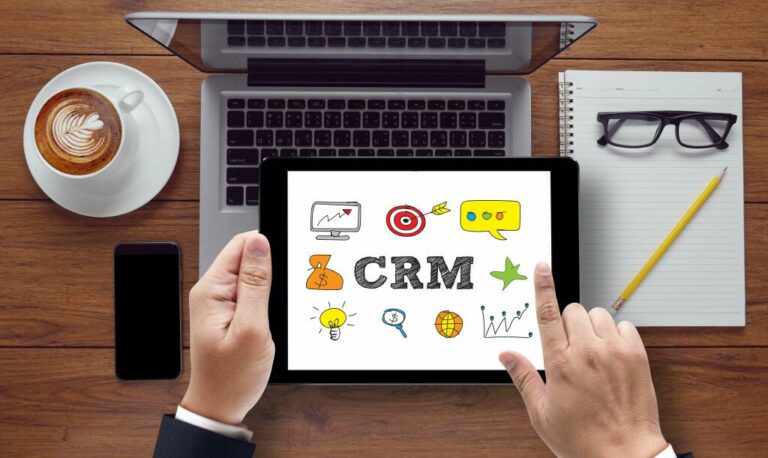Содержание
- How To Move The Team Through The Stages Of Team Development
- Five Stages Of Team Development
- Business & Management
- Collective Leadership And Why It Is Needed
- Forming Stage
- Team Building: Forming, Storming, Norming & Performing
- An Overview Of The Five Stages And Team Development
- Why Proper Management Of The Teams Is Beneficial To Our Clients?
Some team members can feel threatened by the large amount of responsibility they are given – causing them resist and revert back to storming stage. To prevent this from happening team members must be aware of the common pitfalls that may occur during this stage and take appropriate steps to ensure they don’t. Member agree about the roles and processes required to solve problems. Members of the team adjust their work habits and behavior in order to accommodate other team members and make the work on the team more smooth and natural. Team members work through this phase by agreeing on rules, values, professional behavior, and methods. As team members learn more about each other their perspectives about each other change .

As issues are addressed and resolved, the team’s morale begins to increase. Trust builds, productivity rises and the team begins working together toward the common goal. At this point, the leader should draw out the opinions of all members and leverage the diversity of the team. As conflicts arise, the leader must take quick action to deal with the issue and maintain the positive climate. Teachers will come to this guide at different stages in the school creating process. Perhaps you’re curious what designing and running a teacher-powered school entails and want more information.
In nursing, for example, effective teamwork leads to improved patient care.1 In coursework for a master of science in nursing, you can learn how to build and guide teams to success. Brainstorming unique business ideas or completing a large task requires the help of a team or group. When a project is launched, the usual procedure is to appoint a leader for the group and then select a handful of people to help with the project. Creating a group or team bridges people with different personalities, and groups typically go through different stages as they work to complete an assignment.
How To Move The Team Through The Stages Of Team Development
One thing is certain – no team passes over the storming phase. All teams must be prepared to go through the difficult and stressful times as well as reaping the benefits of the productive phases. The task of the coaching manager is to identify where along the path of team development his or her team is and then move it on to the next phase with the minimum of fuss and resistance. It is at the performing stage where team members really concentrate on the team goals. They are determined to work towards them, as they know what rewards are available to them on completion. They are also aware of the strengths and weaknesses of the team, and they appreciate these, and also work towards developing the weaknesses.
- Knowledge sharing, cross-training, and interdependence increases.
- Coach all team members to be assertive, and stand up for their ideas and opinions in a positive and calm way.
- Politeness will wane as everyone gets down to business, and it may not be long before tempers flare.
- The manager at this stage will play very much a non-directive role, concentrating on strategy to plan the next way forward.
People need to get used to each other in order to develop trust and become more productive. Try to step back as group members attempt to work together, and offer healthy criticism without actually intervening. Healthy communication is key to prevent silos from forming.
They are also overly positive about the project, because it’s new, and new is always exciting. 1.The Forming Stage — mainly characterized by team orientation. Services Services Leverage services that provide quick innovation with designs that work the first time—and stay reliable for years. Clay Morgan is an author from Dallas, https://globalcloudteam.com/ Texas who spent a decade teaching college courses in the social sciences before becoming a consultant in communications and organizational strategy. Clay enjoys writing at the intersection of culture and spirituality. He has done ministry with college students for years and loves finding creative ways to engage millennials.
Storming often starts when there is a conflict between team members’ natural working styles. People may work in different ways for all sorts of reasons, but if differing stages of teams working styles cause unforeseen problems, team members may become frustrated. Teams cannot exist indefinitely if there is overarching goal to achieve.
Five Stages Of Team Development
The below list is a non-exhaustive list of behaviors and outcomes that characterize this phase and which high performing team’s generally complete. An understanding of this model helps leaders build more effective teams, quickly. The more you understand what stage your team is currently in, the better equipped you are to successfully support their development, and performance. The manager must go over again the agreements made by the team during the forming stage and ensure that the understanding is uniform across the team. The earlier in the storming stage this is revisited the better and this is where the aware coaching manager comes into his or her own.

As all stages have their own focus, they also correspond to a different set of feelings, behaviours and group tasks. According to Tuckman, raising awareness about the different stages and why things are happening in certain ways could positively influence the team’s process and productivity. Complicated products require a lot of attention and a lot of QA, which means that resolving possible conflicts within the team might be problematic resources and time wise. Setting up a team development process just right will make sure that all the management resources are aimed in the right direction. While the newcomers are discovering the product and only learning its peculiarities, the time is missing.
Business & Management
The diversity and differences of the team members should be emphasized as well as a common goal. There are some teams that never move from this stage to the next because it can be de-motivating. To illustrate the 5 stages of team development, let’s look at the example of Daisy, Adam, Daniel, Mark, and Stella.
The final stage is marked by high productivity and enthusiasm. The team is collaborating to meet the original goals and objectives, and the members are excited to be on a high-performing team. In this stage, leadership is shared as the team works toward exceeding standards and continuous improvement. After working through the significant issues, the group begins to coalesce and actually work as a team, supporting each other, and this is known as the Norming stage. During this phase of team building, responsibilities are clearly defined and the team begins to map out a plan to achieve its goals.

The design team will also develop the school proposal and secure autonomy agreements. The team also creates roles and processes for the school leadership team that will run the school in the Norming, Performing, and Transforming stages. During the second stage, individual expression of ideas occurs and there is open conflict between members. Members tend to focus on details rather than the issues and compete for influence. Low trust among team members is an evident indicator of this stage.
Collective Leadership And Why It Is Needed
The coaching manager will realise that although there may be a great deal of agreement and compliance about what is discussed many people will have different interpretations of what is agreed. One to ones help but inevitably there will start to be undercurrents of disagreement as to what has exactly been agreed. Storming is a challenging phase and the manager who has led the team through the forming stage well and is starting to feel quite good about progress may have quite a rude awakening.
The mood is typically upbeat and energized, but the forming stage can invoke anxiety in some group or team members as they prepare for their new responsibilities, says Tuckman. For teams to move from the storming stage the norming stage they typically do the following tasks. If this phase is not carefully managed it can get out of control and be destructive to the effectiveness of the team. It is especially important for team members to manage this phase with patience and tolerance.
The team’s leader is more engaged in team building at this stage to make sure everyone understands the plan. If the team’s objectives are not aligned, there can be mistakes and missed opportunities. Leadership training is crucial for every business and every leader. A strong foundation of which will drive your team to success. Leadership training basics focus around establishing your purpose as a leader. In order to reach your goals effectively, you must first understand the 5 stages every team will go.
Teams in the forming stage must be careful to avoid cliques, or subgroups from forming within the team. Subgroups may or may not have a negative impact on the team’s performance. It is best for the team leader-manager to carefully observe the subgroups behavior to ensure it is acting in the best interests of the team. I first heard of his stages of team development when I attended advanced leadership training offered by the Boy Scouts of America. Tuckman’s theory is that every group moves through four stages on its way to becoming a high-performing team.
Norming – when rules are finalised and accepted and when team rules start being adhered to. Forming – when the team meets and starts to work together for the first time. Though Tuckman presented the different phases as a linear model, it is important to realize that in practice, the phases are rather fluid and group formation is not always a linear process. The co-creation stage, when the focus shifts towards developing group outputs.
This is a period of great personal growth among team members. There is a good deal of sharing of experiences, feelings and ideas together with the development of a fierce loyalty towards team members. There will be arguments, disagreements and disputes but these will be facilitated positively as the team will now live and die by its rules. The manager at this stage will play very much a non-directive role, concentrating on strategy to plan the next way forward. The team will be in many ways, self-directing, perhaps even self-appraising with the manager taking very much a back-seat role.
Forming Stage
More often in the corporate world, cross-functional teams will be formed for a project and then disperse at the end of the project. However, before moving on to the next project, it can be beneficial for the leader to overview with the team their successes and challenges , as well as celebrating their accomplishment. As a leader, a thorough understanding of Tuckman’s Model of Team Development will help guide your leadership behaviors’.
Well, truth be told, some teams may skip this step altogether, all in the hope that they’ll avoid unpleasant conflict and the clash of ideas. At this initial stage, a glimpse of a future project leader may emerge, as the person who possesses the largest knowledge about the project’s subject takes unofficial charge. The Performing Stage — mainly characterized by overall synergy. Sign your church team up for Discipleship Ministries’ Innovative Leadership Project to experience and develop strategies for the future.
Team Building: Forming, Storming, Norming & Performing
Team members accept each other’s differences and communicate openly, sharing ideas and giving feedback. There is a growing sense of belonging amongst team members and a desire to maintain the group. To grow from this stage to the next, team members need to engage in collaborative problem solving. This starts with a willingness to listen and consider the interests of others.
And while this might be inescapable during the Storming Stage of team development, it is better to avoid it when all the five stages of team development are finished. The team reaches the performing stage, when hard work leads, without friction, to the achievement of the team’s goal. The structures and processes that you have set up support this well. As leader, you can delegate much of your work, and you can concentrate on developing team members. It feels easy to be part of the team at this stage, and people joining or leaving won’t disrupt its performance. Varying ideas and techniques are common when working with a group or team.
In the third stage, the team develops work habits that support group rules and values. They use established tools and methods; exhibit good behaviors; mutual trust, motivation, and open communication increase; positive teamwork and group focus are apparent. The team relationships grow and individual characteristics are understood and appropriately utilized. The team leader continues to encourage participation and professionalism among the team members. The successful coaching manager will ensure that the team meets and understands the team goals, the roles they have to take on and the rules by which they have to play.
Politeness will wane as everyone gets down to business, and it may not be long before tempers flare. Members will have different thoughts on how to move forward and who is most qualified to take the reins of various activities. Indeed, plenty of groups and virtual teams fail in this stormy stage.
Why Proper Management Of The Teams Is Beneficial To Our Clients?
If the team members have grown attached to the project, they may even mourn the fact that the project is ending and that they need to move on to work on other projects. In order to understand how and when each of them spends time working in the garden, they track their time. They feel proud when they see that they each spend about 4 hours a week on gardening, as that means a larger amount of vegetables will produce well. Team members have grown fully accustomed to each other’s workflows.